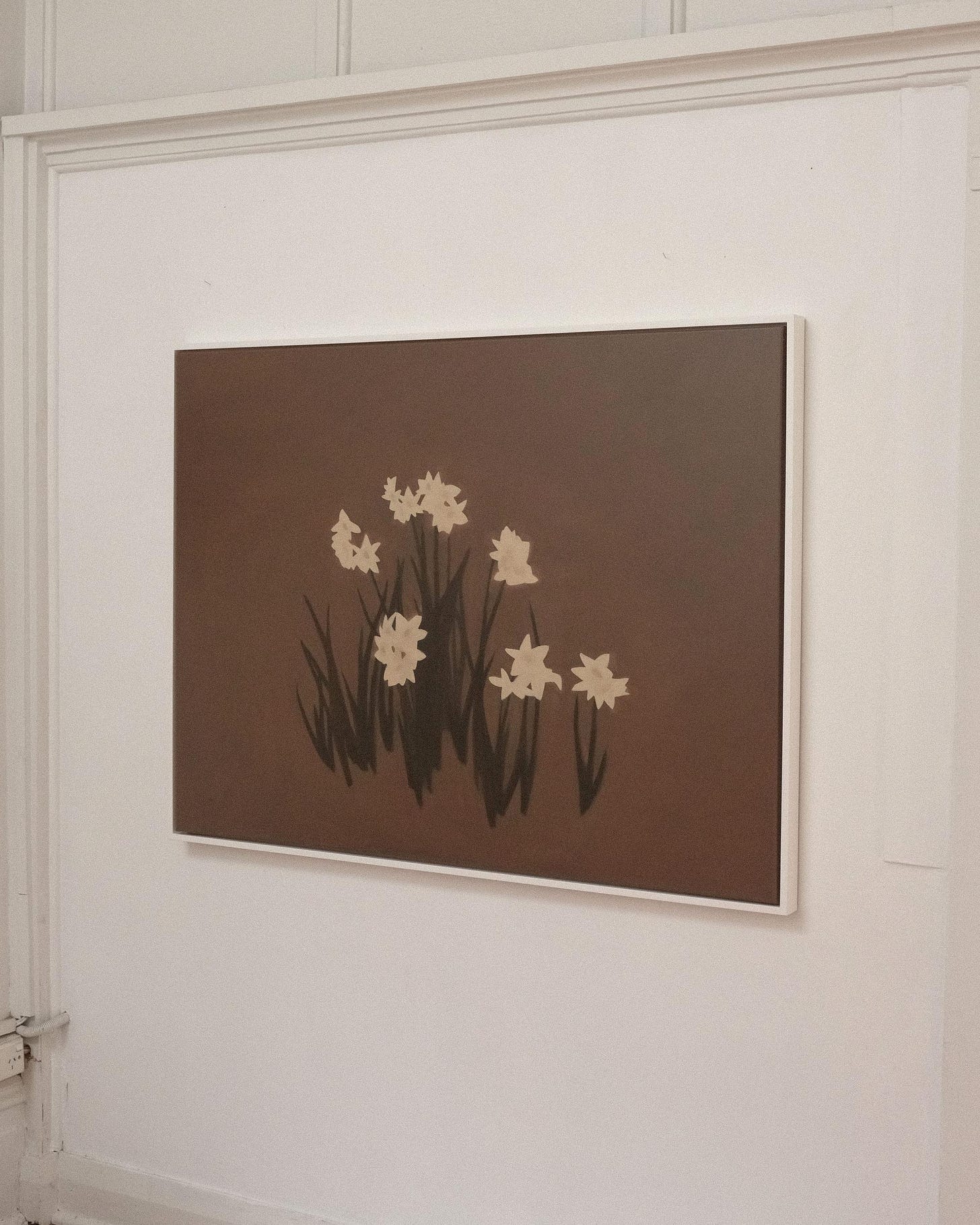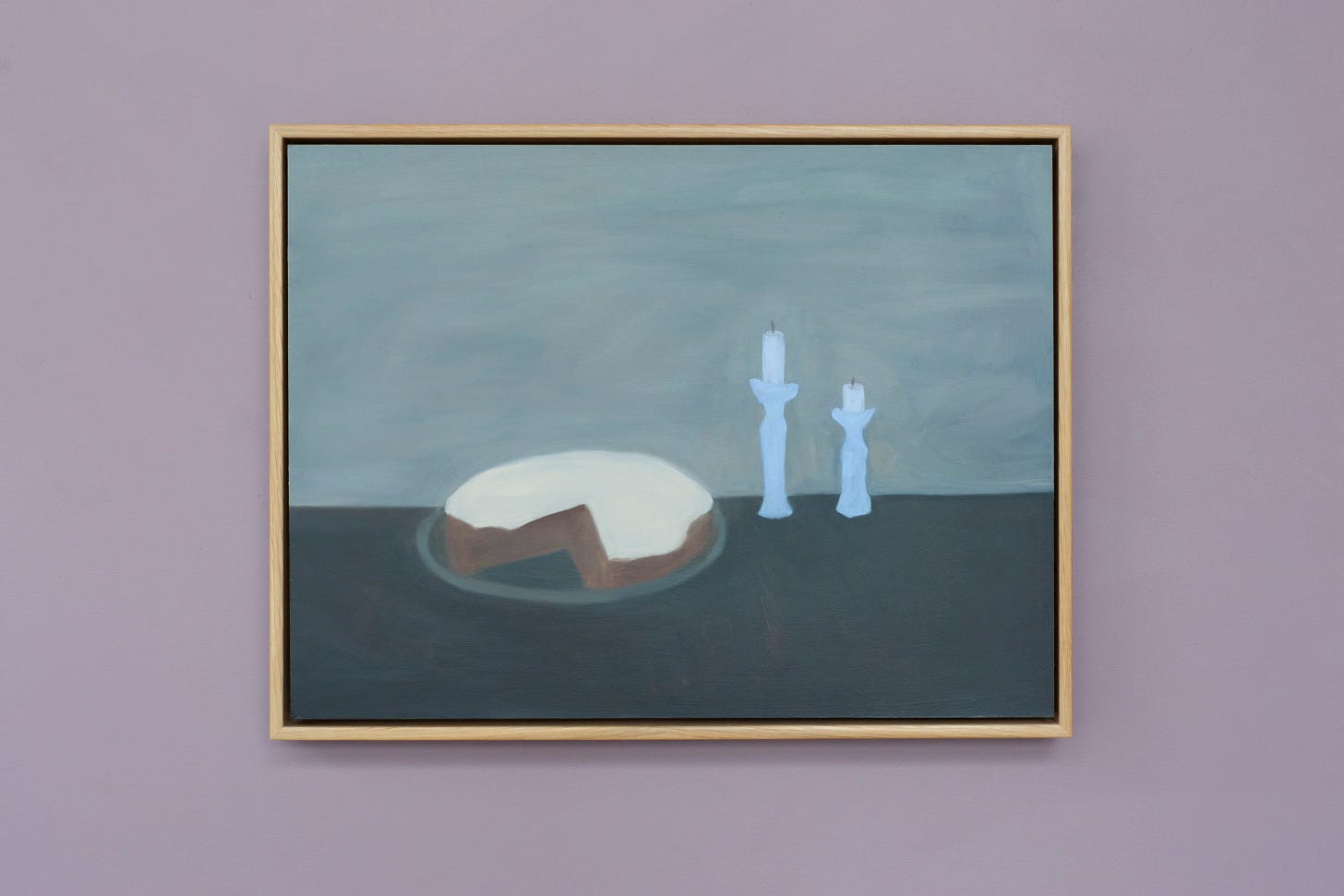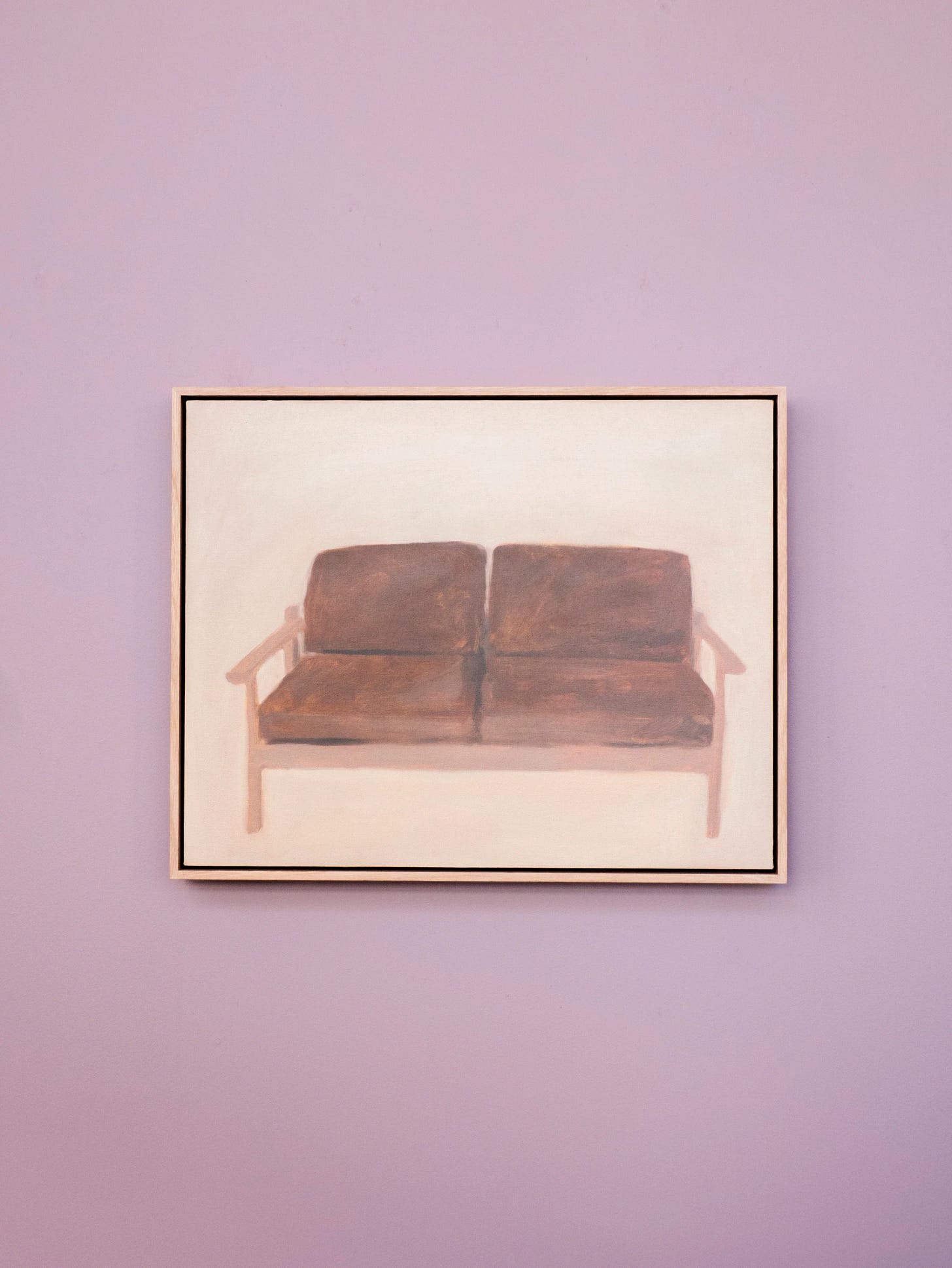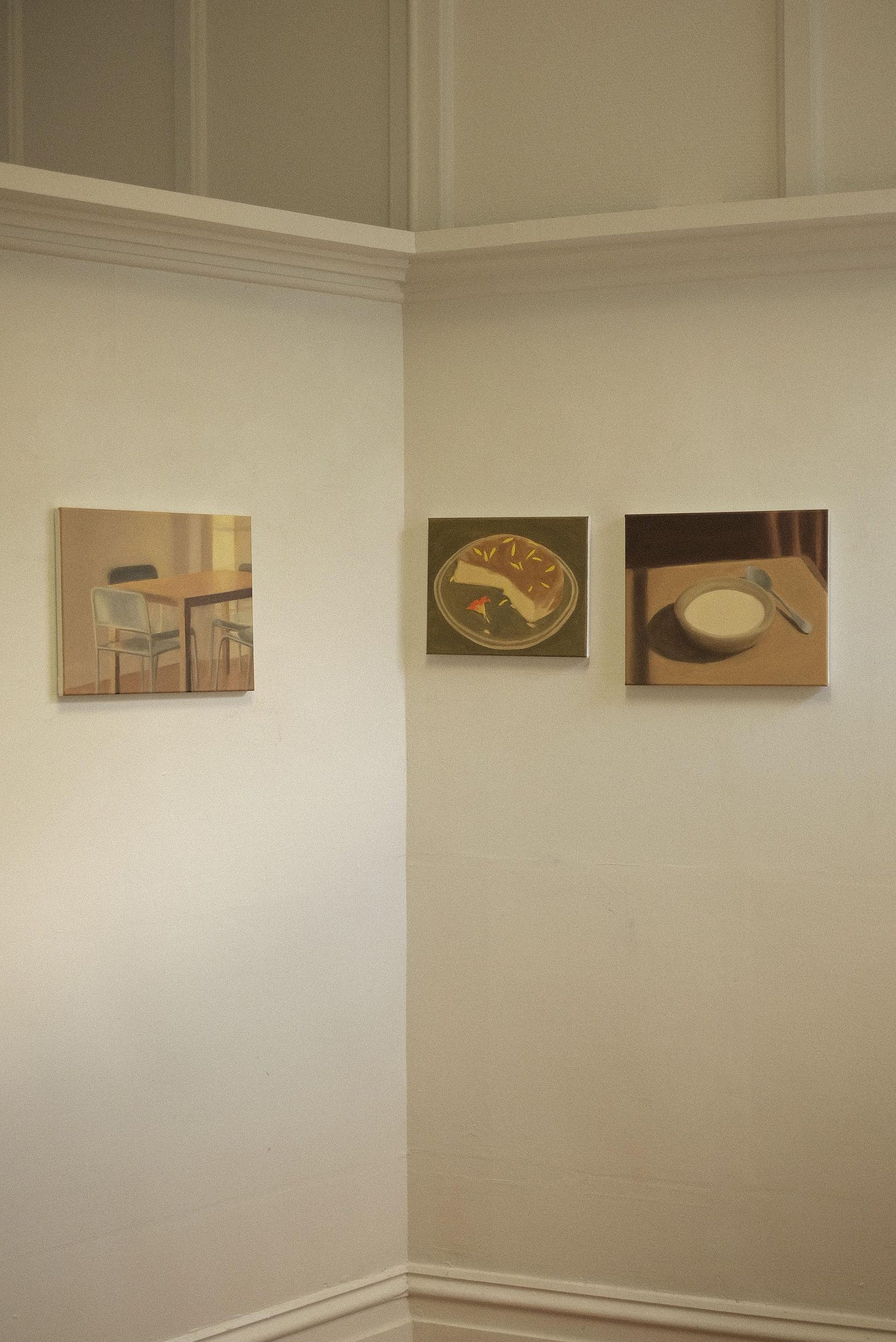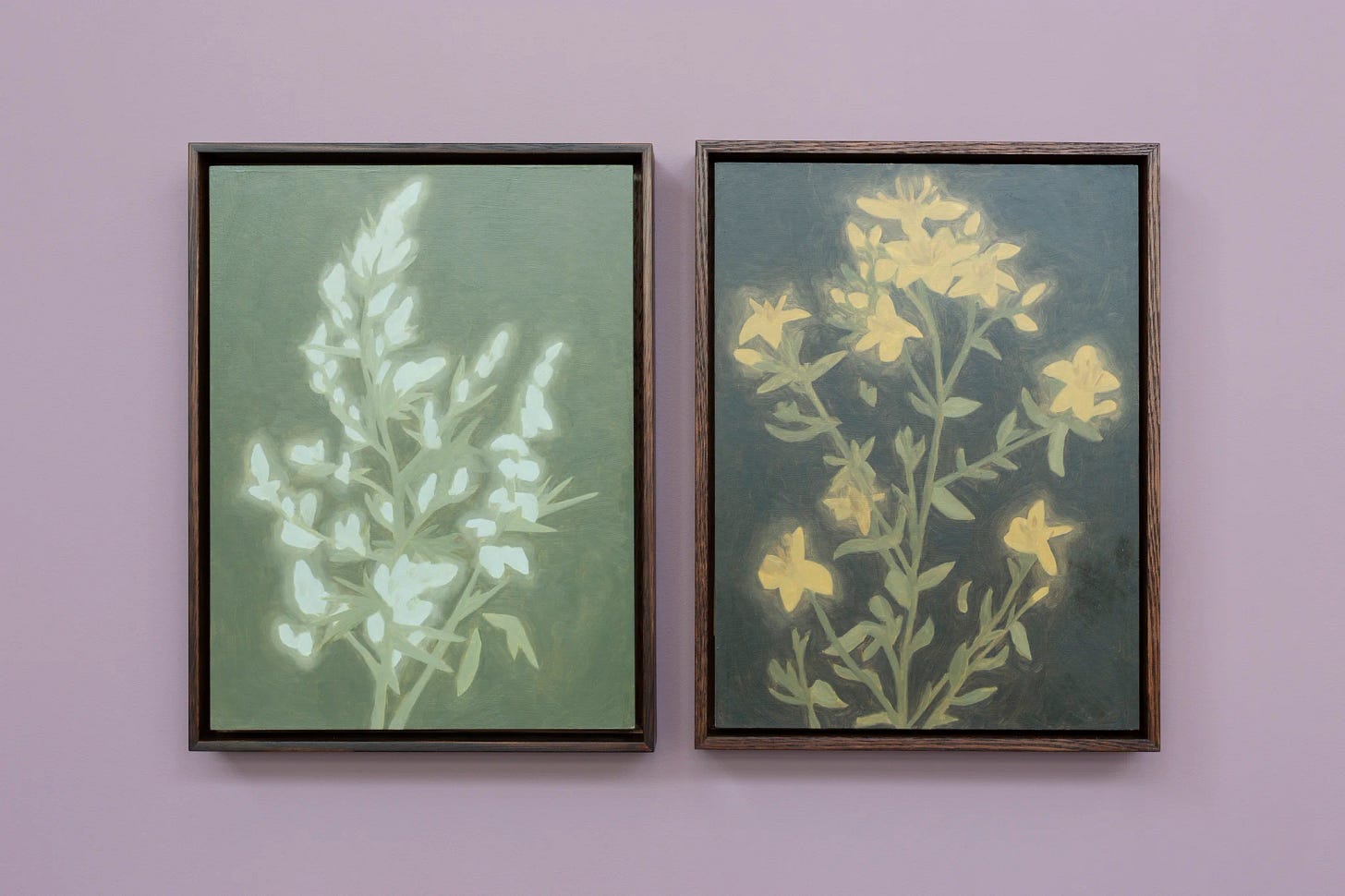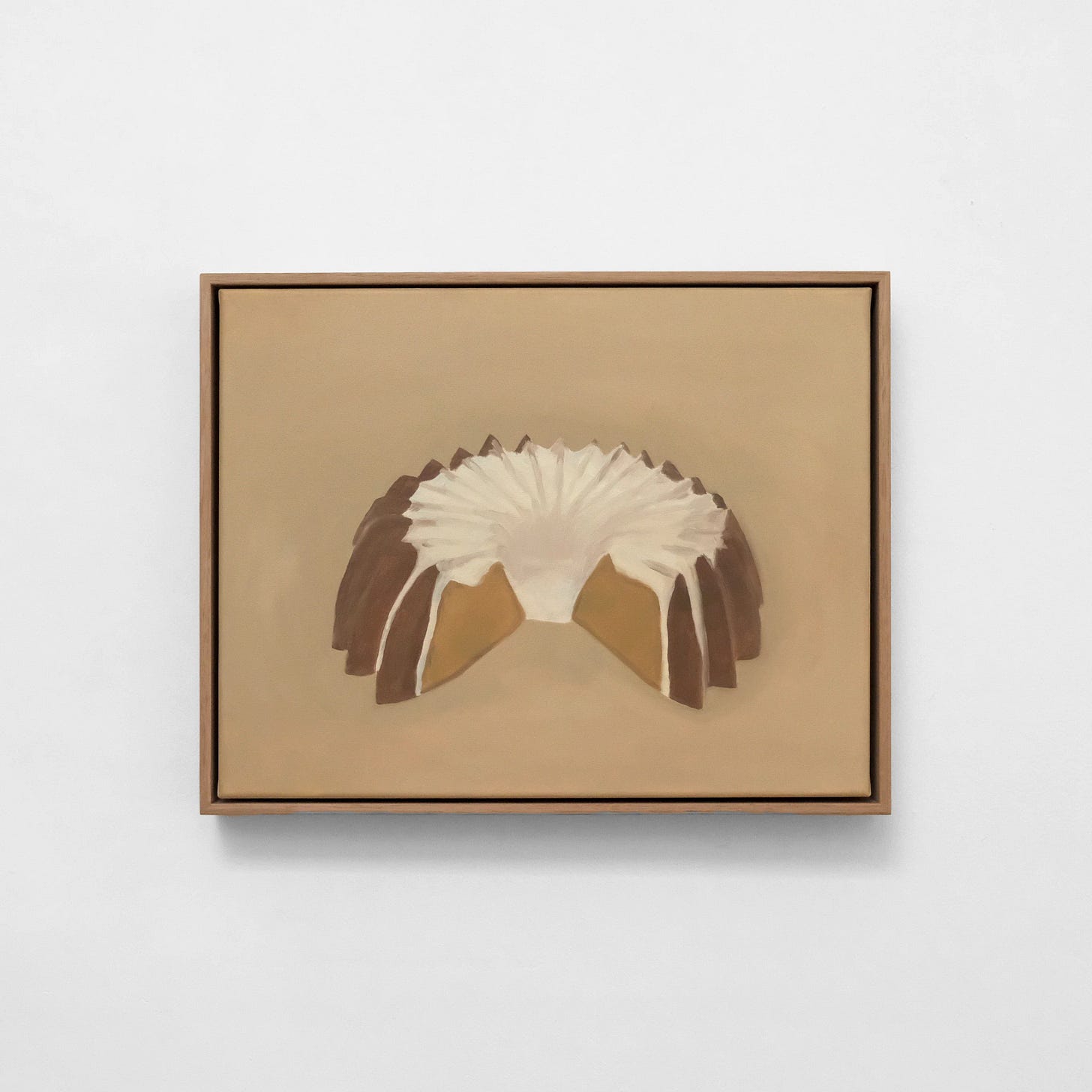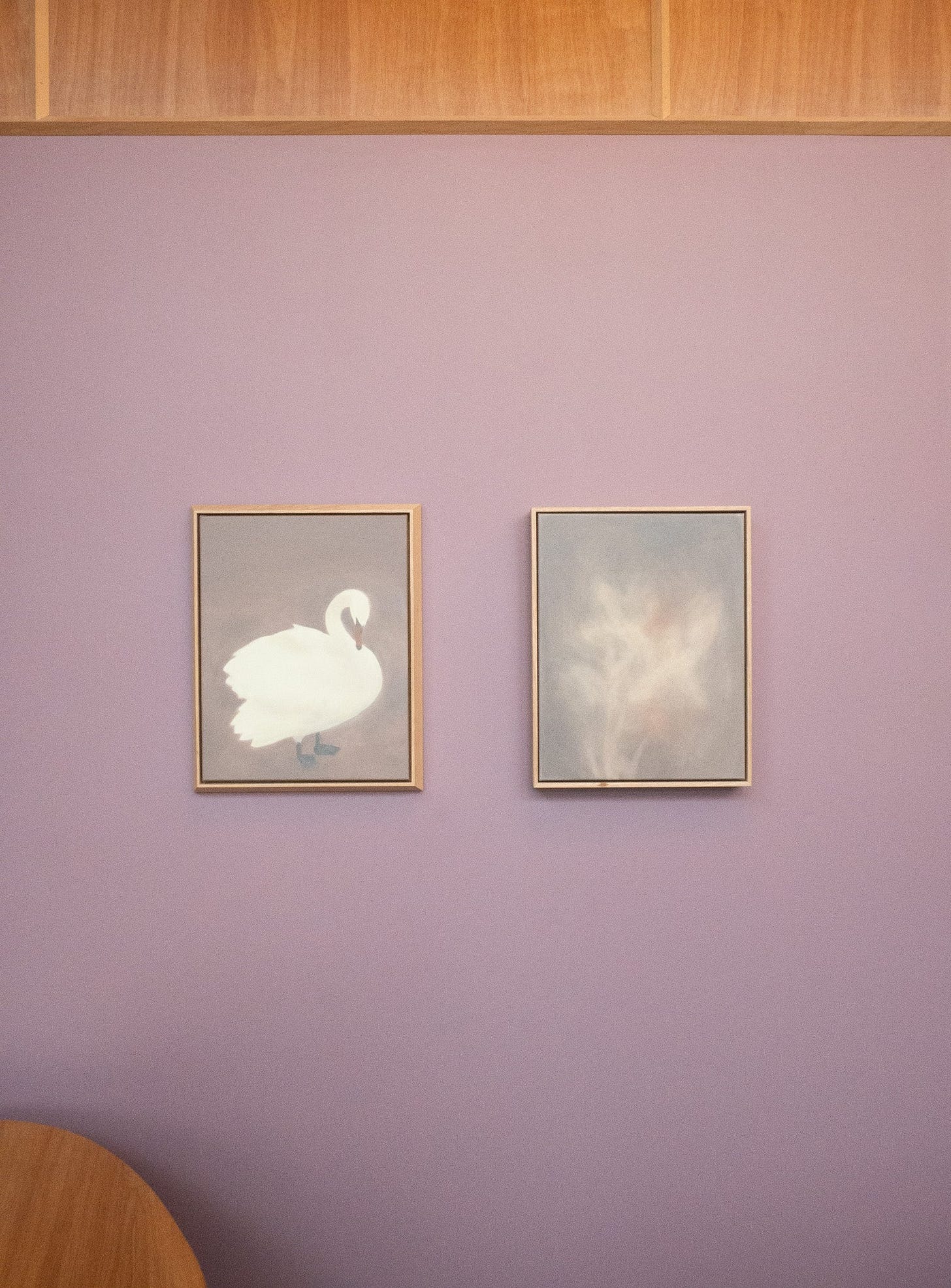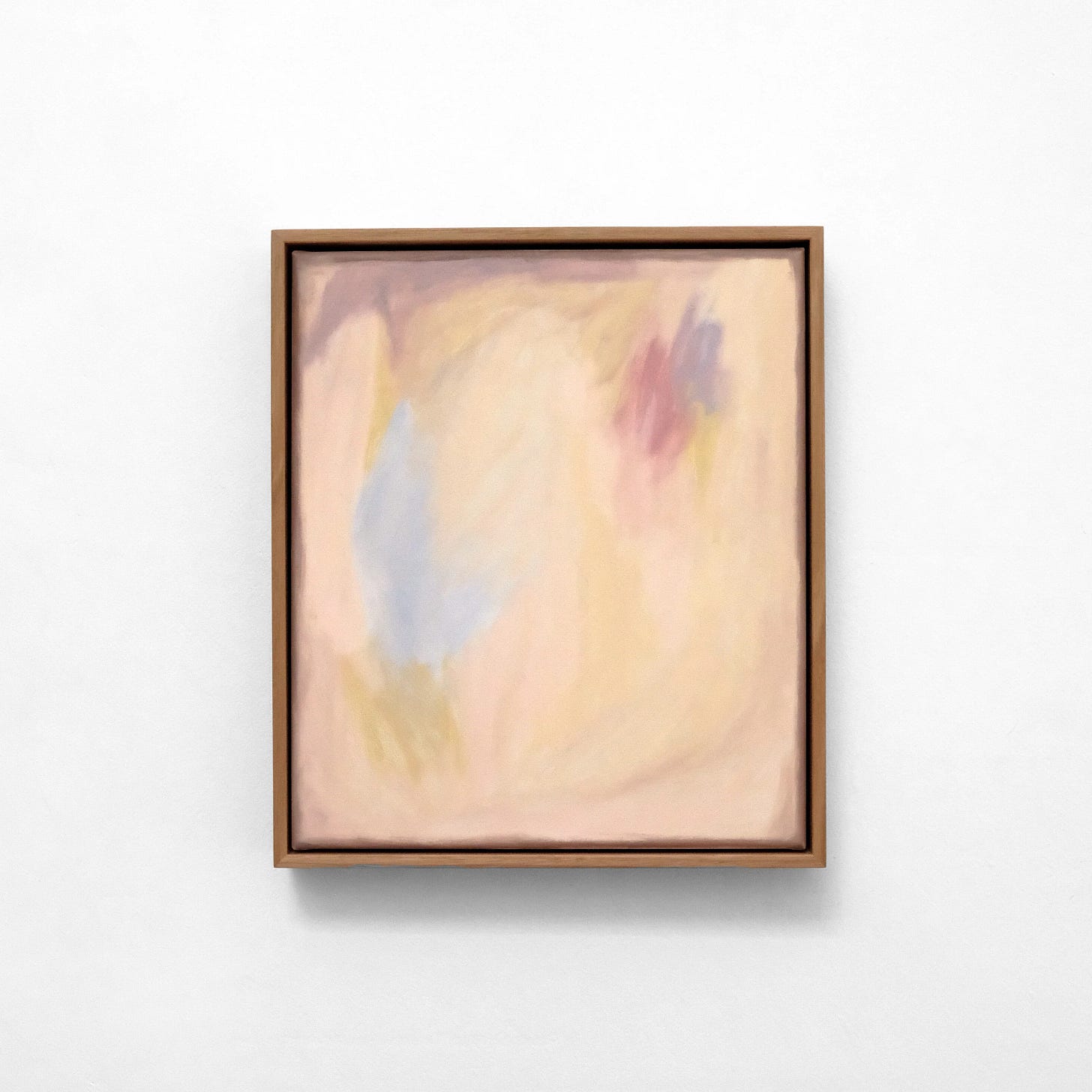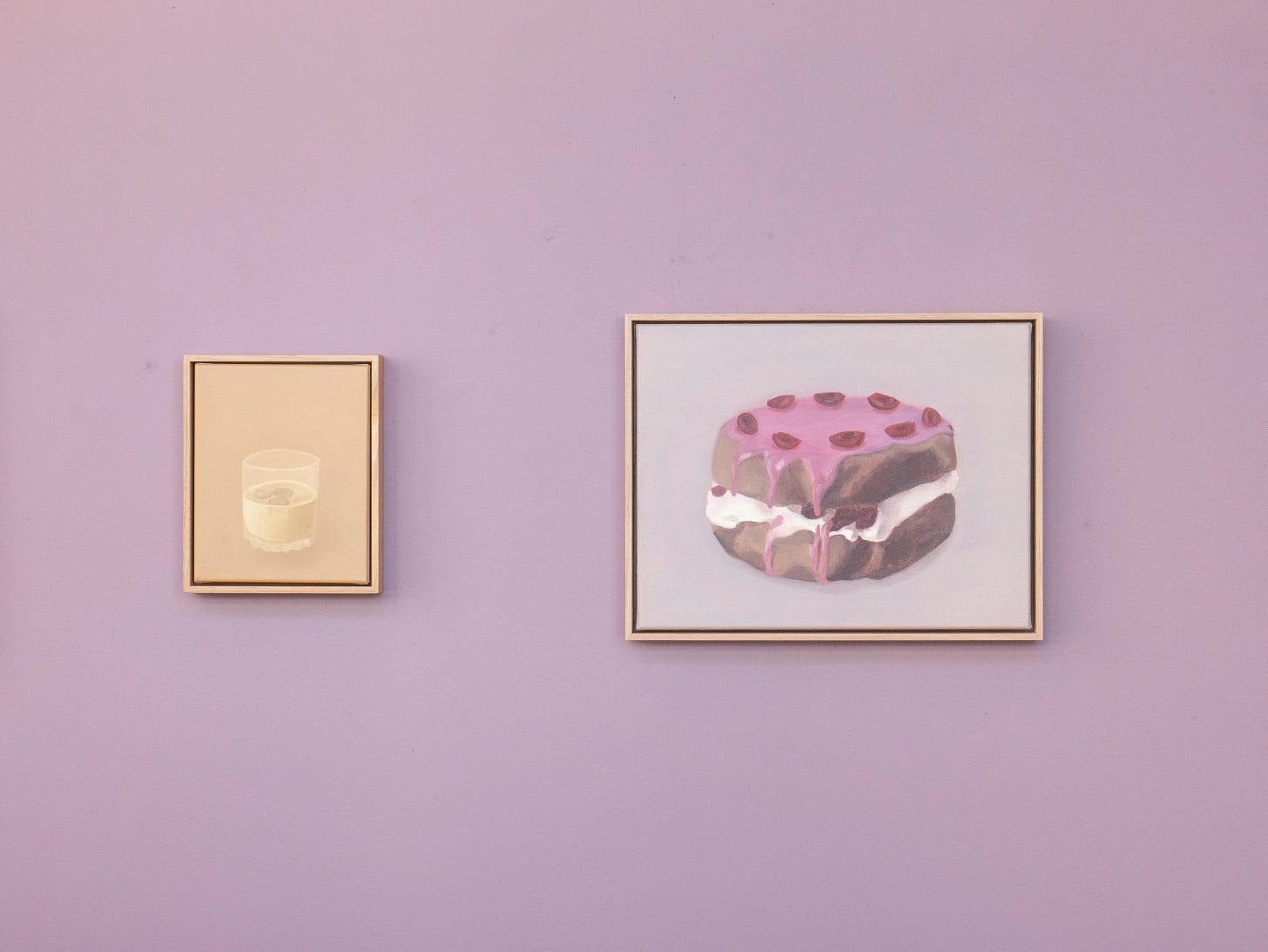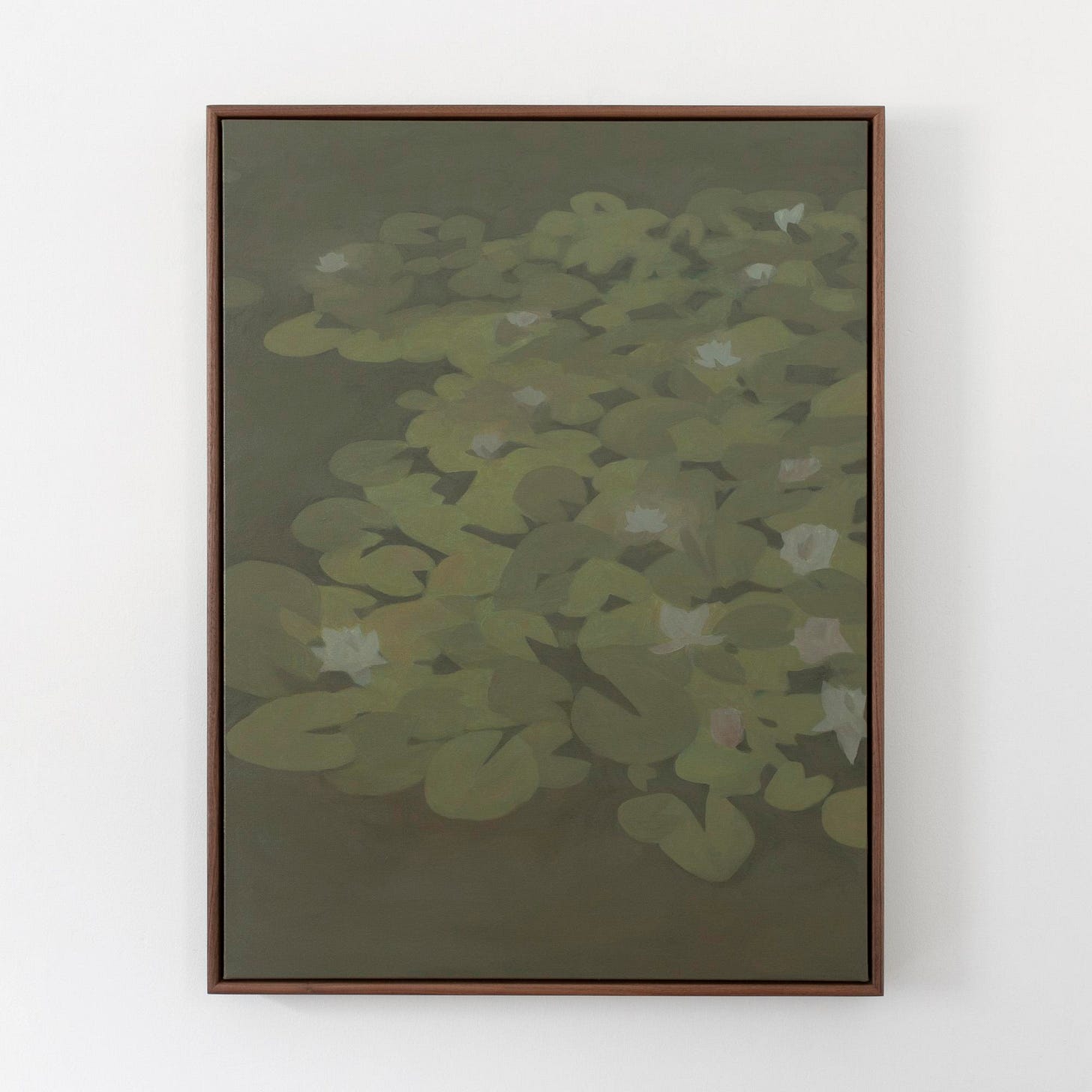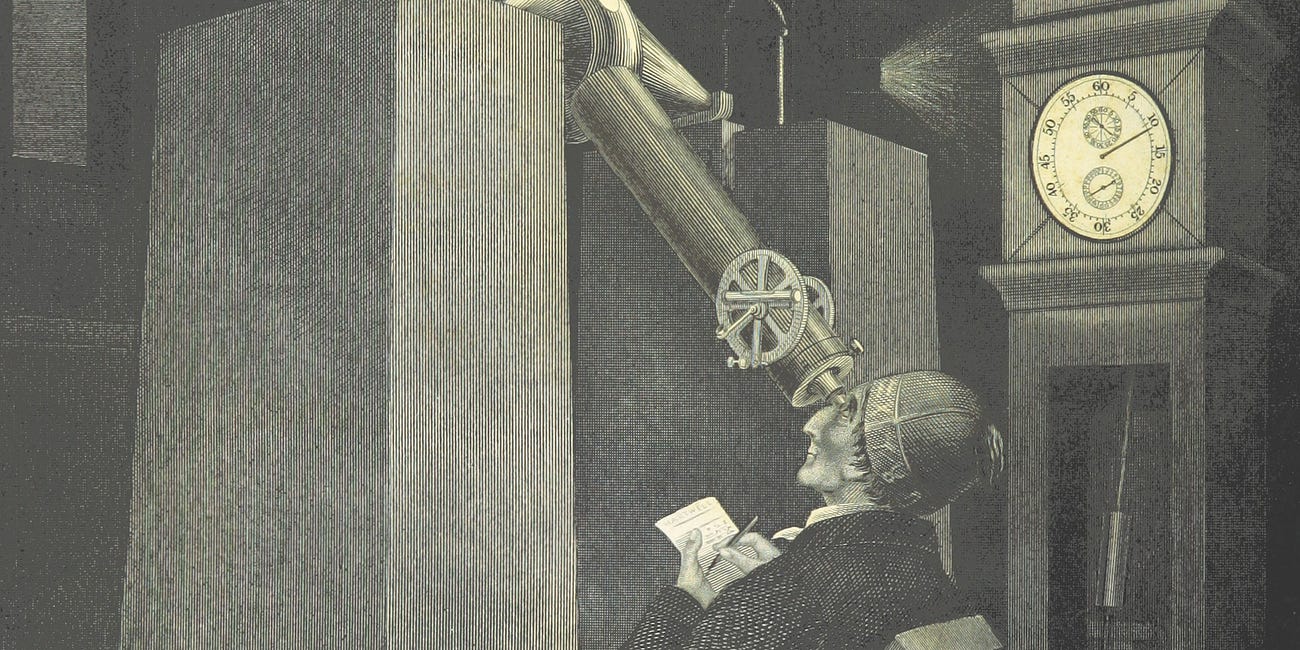No.261
Each morning I look at at the tiny shoots of vegetable growing in earth and immediately convince myself they look no different to the day before—not greener, not stronger, and not conceivably ever going to turn into an entire beetroot or a spring onion or an anything. Each morning I look at the tiny shoots of vegetable growing in earth and see an abundance of green, of life, of food in its most unaltered and easy-going state. That is: a seed is a stem is a leaf is a flower is a fruit is a seed. We wait, they grow, we eat them, they grow.
I also look each morning at certain objects around the house to remind myself of what I’m even doing there, or here, namely: the table lamp which belonged to grandparents and whose metal body maintains a slight lean to the side in a way it is not designed to; a tiny wooden dish and its accompanying slender spoon which was carved for me in the earliest days of COVID-19 lockdown while living in an isolated, rural France and was initially for storing feelings; a small and anatomically incorrect stuffed toy fox whose overly large and pointed grey snout casts, twice a day, a captivatingly long shadow on the wall (some days I notice the shadow instead of the fox itself); a palm-sized metal calendar which sits on top of the dresser (incidentally one of thirteen objects of affection).

Needing to note these objects in particular because of a persistent suspicion: that there is a certain type of inherent groundedness lacking in me, though I’m unsure of the exact nature of this supposedly absent grounding, and highly doubt whether changes to my immediate but external environment could bring it about or tempt it out of the late 1800s woodwork. (The immediate internal is something different, though I don’t know how to define it and can hardly locate it these days.) Whatever this thing is or isn’t, it follows me from room to room, rooms which are on a single layer of building and thus allowing the absent things to follow you around extra faithfully because there really aren’t any real or disappearing corners. Like a magic trick, the kind children perform and parents pretend to believe them, you cannot hide in the house from either people or truths.
But then you also can’t hide from the swifts returning to Scotland from Africa, and we heard the first of their screeches a couple of days ago while out in the garden. Two of them, three of them, then seven in a single sight of the sky. Their unlikely scythe wings, their cloud-filtered screams that are in fact honey, their practice of vanishing themselves into layers of atmosphere so high it hurts the neck to try and keep the birds within the eyes for more than a few moments.
(Hiding lately has also looked like purchasing balls of wool, first just enough to knit a single yellow and desperate hat, but then enough to make several hats and then enough to make a sweater, and then enough to make two more sweaters and now I’m wondering if what I’m actually doing is subconsciously purchasing the quantity of wool necessary to build a nest in which to conduct a kind of retirement from feeling.)
In truth most of the time I don’t want or need to hide, from people or groundings or truths or birds—often the last two of those happen to be the same thing anyway—but there are, undeniably, more times lately where hiding is what’s wanted, needed, and consequently sought out. Perhaps the hiding is a kind of grounding, moving down into the layers of the self and its solitude as the migrating birds climb higher and the nights creep ever-longer. Ever shorter? Days the same length as any day. The lightest one in June isn’t really so far away now, a thought which can easily send me into the gaps of floorboards like a panicked louse, and I wonder if for me these lightening weeks are supposed to be a time for hiding, just not in the way I was picturing: hiding in plain sight is what I will try now, a blending into surroundings so that the wild creatures come closer, so that the seedlings dare to grow themselves taller in front of my twitching louse eyes.

THIS WEEK I FELL IN LOVE WITH:
The paintings of Te Whanganui-a-Tara Wellington-based Briana Jamieson—so many pieces to love? Especially when seen in situ on their temporary walls, via the exhibition collections on Kaukau, and especially those of dark disappearing-greened waterlily leaves. It occured to me perhaps there were too many to love after I’d narrowed down a selection to about 20 paintings. Love spread thinly but evenly, as opposed to deeply and specifically, and weak at the knees for shadows, for light, for lumps of the ordinary.
“Something strange happens when people are in a small boat, something that rarely happens with people in a car or an elevator, on a train or even a boat large enough to say that you are on it instead of in it. What they experience is the sense of solitude. There are only a few thin boards keeping them from being totally engulfed by the surrounding deep sea. They are lonely, but it’s not an isolated loneliness, because they feel lonesome together, together with the others in the boat. This is why a temporary bond forms between people in a small boat. They only have each other, the deep sea is frightening, and small boats are very fragile. Therefore, each one of them becomes the other’s lifebuoy. If you’re not afraid, then neither am I, so we shouldn’t scare each other, and we ought to be nice to each other as long as the water surrounds us.”
— Stig Dagerman, A Moth to a Flame (1948)
The above had me thinking about how we relate to one another while we sit here knowing things sink, knowing levels rise, knowing some things burn, knowing others perish in floods, knowing the soils are increasingly tired, knowing of massacres—thinking that if more people were able to move or grow into a mentality similar, one that looks like being nice to each other because we are in effect in small boats of community surrounded by rising water then there might be more good done and less pushing other people out of the boats, less hoarding of the means to more nourishing ends. It doesn’t help if only a few people have exceedingly large and expensive boats, and that was never going to be helpful, but what helps is if more and more people know how to kindly and supportively exist in small boats together—if more and more people can become interested in that.
We are lonesome in this together. Distinctly lonesome because being set apart from and sterilised against all the ecosystems we evolved alongside is its own kind of loneliness, one that leaves our nervous systems jittery and our hearts weak, when what could be happening is, amidst the frightening realities of the changing planetary climate, of the Earth’s most essential and singular systems, is being not afraid together, and that not-afraid-ness looking like building something completely new, completely more beautiful, completely better for everyone.
Again and for however long necessary: (Actions for demanding a Free Palestine and an end to occupation.) / (Reading list for a Free Palestine.) / (Postcards for Palestine, free PDF downloads.) / (Send a physical postcard demanding an end to UK arms sales.) / (Ten free ebooks for getting free from Haymarket Books.)
Paid supporters of The Sometimes Newsletter receive one or two additional pieces each month, including things like short stories, illustrated essays, and more detailed looks into creative processes. The most recent of these being:
In Praise of Anything
There are many volumes which specifically aim to praise things to a dramatic literary degree, whether that be folly, shadows, slowness, idleness, walking, floods, boredom, missing out, the night, poetry, hands, mountains, diaries, or really any topic or theme you can additionally think of. To me most of these literal titles seem either obvious, diminishing, misleading, or a combination of all three.




